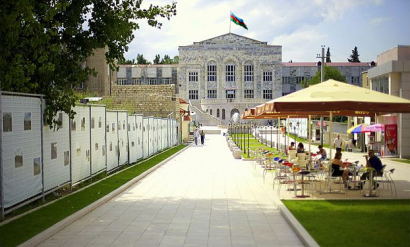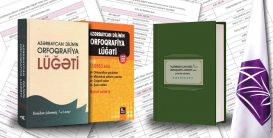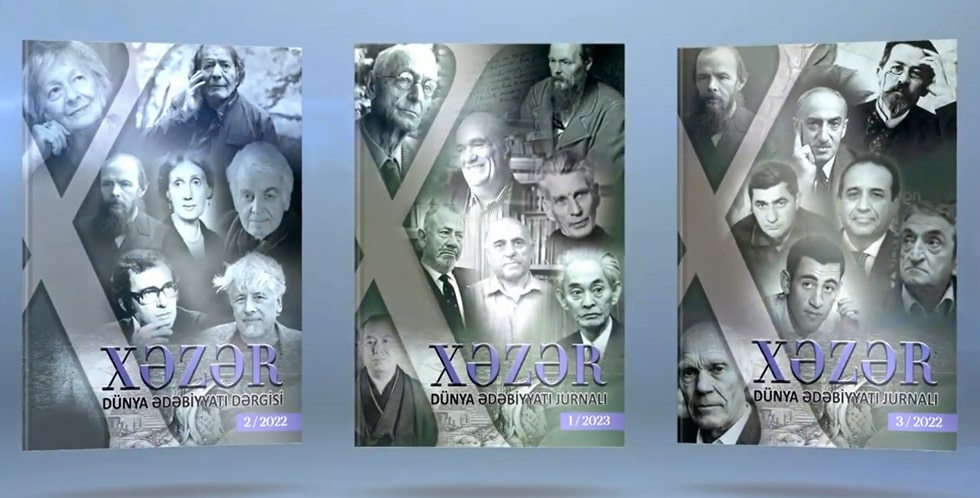A History of How Khankendi Became Stepanakert

The Azerbaijan State Translation Centre (AzSTC) has produced a documentary archival video footage “A History of How Khankendi Became Stepanakert” that features how the Armenians were resettled to Nagorno-Karabakh under the Turkmenchay Peace Treaty signed in 1828 between Russia and Iran, and how they realized their insidious policy of armenianization. AzSTC has sent the video footage with subtitles in English, Russian, Turkish, Persian, Arabic, Georgian, French, Ukrainian, Spanish and German languages to accredited foreign embassies and consulates to the Republic of Azerbaijan, as well as distributed among influential global internet and social networks.
Karabakh is Azerbaijan!
A History of How Khankendi Became Stepanakert
Ibrahimkhalil Khan - the son of Panakhali Khan, the khan of the Karabakh Khanate, who founded the town of Shusha in 1752 - ordered to build a summer residence in a picturesque spot at the foot of the Shusha mountains where he could spend the cold autumn and winter months. That area was named Khankendi in honour of Ibrahimkhalil Khan.
Ibrahimkhalil Khan's son Mehdigulu Khan later gifted his beloved wife Parijahan Beyim the entire settlement so that his family and close relatives could spend the winter months there.
Following the Kurakchay Peace Treaty of May 14, 1805 and the Gulistan Treaty of October 12, 1813, which secured the annexation of the Karabakh Khanate to the Russian Empire, a Russian cavalry corps was deployed in Khankendi. Their deployment shattered a peaceful life in the settlement. A great number of Armenian families from Qajar Iran and Ottoman Empire were resettled to this region after the signing of the Turkmenchay Treaty on February 10, 1828. They were hired by military units in the tsar army and by government offices. Moreover, this location was shown as Khankendi on all military and civilian maps drawn up by tsarist Russia in the 19th century.
https://az.wikipedia.org/wiki/Xankəndi
Taking advantage of the situation following the First World War, the Armenians became more active in Russia after the Bolsheviks came to power and began to realize a greedy occupation of lands and an insidious policy of armenianization across the Caucasus, as they failed to have them pursued in the Ottoman Empire. The initial fruit of their actions was the establishment of their first-ever 'Soviet Armenia' state with the support of Bolsheviks throughout the Azerbaijani cities of Irevan, Nakhchivan and Zangezur. After a while, in the 20s of the last century, the Armenians, dissatisfied with their inexhaustible desire to enlarge their territory, began to lay claim to Azerbaijan’s Karabakh, and with the help of the Russian armed forces, ousted peaceful Azerbaijani civilians who had given them this land to settle. Criminal provocations and massacres against Azerbaijanis led to the formation of the Nagorno-Karabakh Autonomous Region within Azerbaijan in 1923.
In 1923 the city of Khankendi was renamed Stepanakert in honour of Stepan Shaumyan, the leader of Armenian Bolsheviks and founder of the soviet-communist dictatorship in Baku under the Russian Bolsheviks who personally orchestrated the blood-curdling mass killing of more than 20,000 Azerbaijanis in Baku by the decision of Sergei Mironovich Kirov of Russian origin, who had been appointed first secretary of the Azerbaijan party organization by the Central Government in Moscow.
From 1988 and on, Armenians started holding unsanctioned rallies financed by the Armenian diaspora and organized by nationalist emissaries rooted abroad, demanding the separation of the Nagorno-Karabakh Autonomous Region from Azerbaijan and its annexation to Armenia. The main target of this movement, called Miatsum, was to purge the provincial capital of Khankendi of the Azerbaijani population, to cleanse all trace of Azerbaijan by destroying the mosques and historical monuments, and to armenize the names of parks, streets, schools, cultural and educational sites in the city. In those years, the Armenian negotiators, who achieved a secret agreement with Moscow – USSR’s General Secretary Mikhail Gorbachev and his wife Raisa Gorbacheva, began a series of terrorist attacks in the city. The first victims of this protracted Karabakh war were Azerbaijani students at Khankendi University. The houses of Azerbaijanis who did not want to leave their native lands were burned down, and the Azerbaijanis were subjected to moral and physical torture.
In September 1988, the Armenians by force of arms expelled from the city all the ethnic Azerbaijanis living in Khankendi, transported to Armenia a large number of plant and factory machinery and equipment built at the Azerbaijan state’s expense. Weapons and military equipment of the Russian military units located in Nagorno-Karabakh came under the control of illegal Armenian military formations and terrorist groups.
What happened in Khankendi has engulfed the whole Karabakh in a chain reaction... And the autonomous region, where most of the population were Azerbaijanis, was fully armenized within a few months. As a continuation of the Armenians’ territorial greed, who took their first steps as an independent state after seceding from the USSR in 1992-1993, they also occupied Azerbaijan’s seven districts - Lachin, Kalbajar, Agdam, Fizuli, Jabrayil, Gubadly, and Zangilan - where not a single Armenian had lived.
Links:
https://az.wikipedia.org/wiki/Ermənistanda Qarabağ hərəkatı
https://az.wikipedia.org/wiki/Miatsum
Diplomatic negotiations on the return of the Azerbaijani territories occupied for many years, the expulsion of the invaders from these lands, four resolutions adopted by the UN Security Council have so far yielded no results. This historical and human injustice was ignored by the international community and world politics for many years, which led to new territorial claims of corrupted Armenians - military intervention in the Tovuz district of Azerbaijan, far from the Karabakh region (July 12, 2020).
Another ceasefire violated by the Armenians on September 27, 2020, subsequently turned into a 44-day war, which became a source of eternal honour and pride for our people. The victorious Azerbaijani Army under the leadership of the Supreme Commander-in-Chief Ilham Aliyev began to liberate our lands from the invaders at the cost of their lives, waving our tricolour national flag in our native lands ...
And November 10 was engraved in our history as a glorious Victory Day – the date we restored our territorial integrity.
AND OTHER...
-
 Movlud Movlud’s Short Story on Turkish Portals
Movlud Movlud’s Short Story on Turkish Portals
“Detayhaberler.com”, “Dibace.net” and “Haber.232.com”, leading Turkish portals, have posted in Turkish the short story “We Have Already Grown Up” by the...
-
 The Book “The Classification of Words Extracted from “The Spelling Dictionary of the Azerbaijani Language” Out
The Book “The Classification of Words Extracted from “The Spelling Dictionary of the Azerbaijani Language” Out
The Azerbaijan State Translation Centre has published a voluminous book “The Classification of Words Extracted from “The Spelling Dictionary of the Azerbaijani Language”









